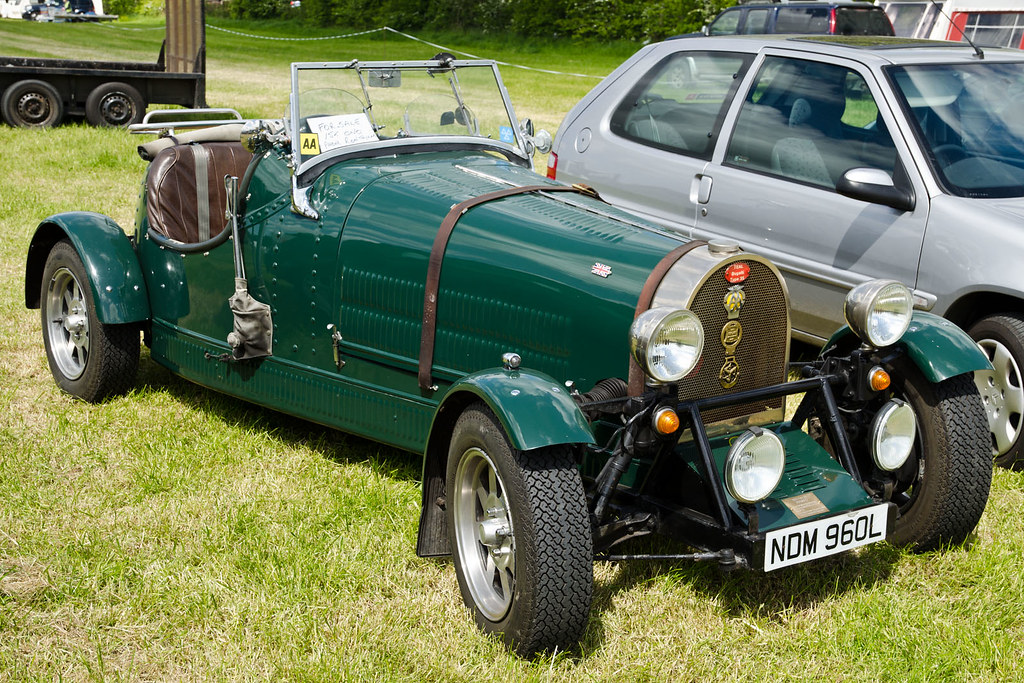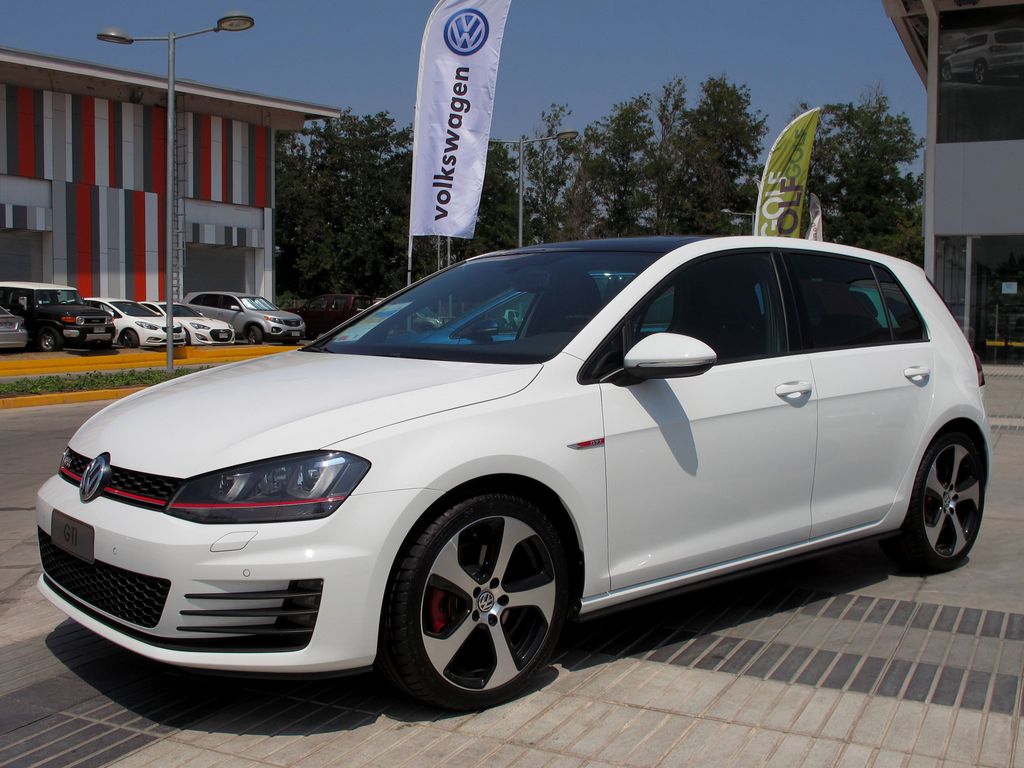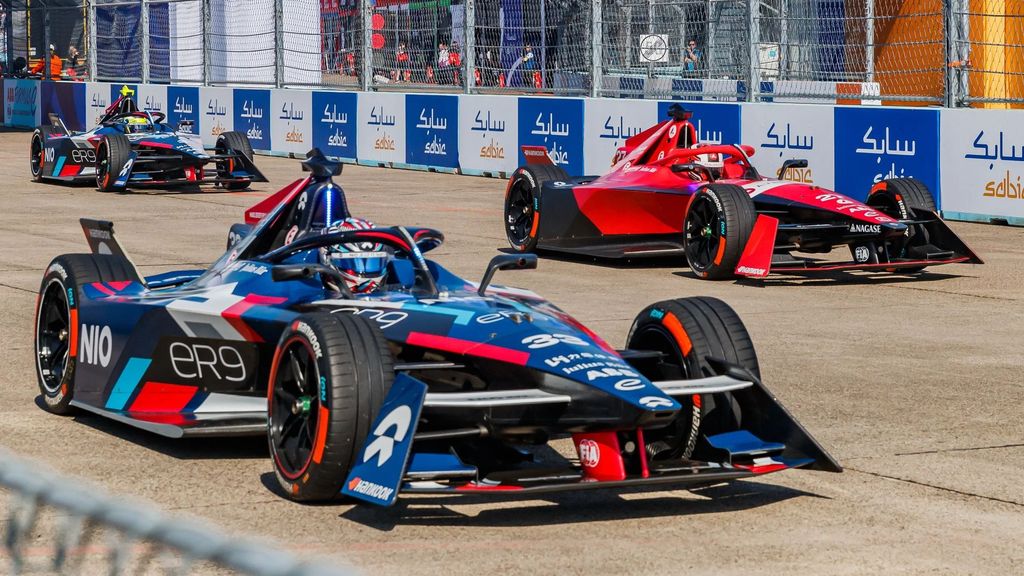
Motorsports, at their very best, serve as a crucible for groundbreaking innovation, continuously pushing the limits of mechanical and human endeavor. It’s a realm where the relentless pursuit of speed and engineering brilliance sparks countless moments of automotive triumph. However, every now and then, race cars emerge that are simply too far ahead of their time, machines that don’t just break records but also, inadvertently, the established rules. These are the vehicles that, in essence, “flew too close to the sun,” forcing governing bodies to intervene.
The stories of these automotive titans are deeply etched into the annals of motorsport history. They are narratives of engineers and drivers audacious enough to envision a future of performance that the present wasn’t quite ready to embrace. From revolutionary aerodynamic solutions and advanced suspension systems to sheer, unadulterated horsepower, these cars were more than just fast; they were disruptive forces. Their undeniable superiority often prompted sanctioning bodies to re-evaluate the very essence of fair competition, ultimately drawing definitive lines in the sand.
In this in-depth article, we celebrate a selection of these legendary machines—cars that were deemed too fast, too ingenious, or simply too overwhelmingly dominant for their era. These are the motorized marvels that ignited controversy, captivated audiences with their track prowess, and were ultimately sidelined not for failure, but for being too far ahead of the game. Join us as we explore the engineering brilliance, the audacious tactics, and the sheer driving excitement that made these vehicles unforgettable icons of speed, innovation, and, ultimately, prohibition in the world of high-performance racing.
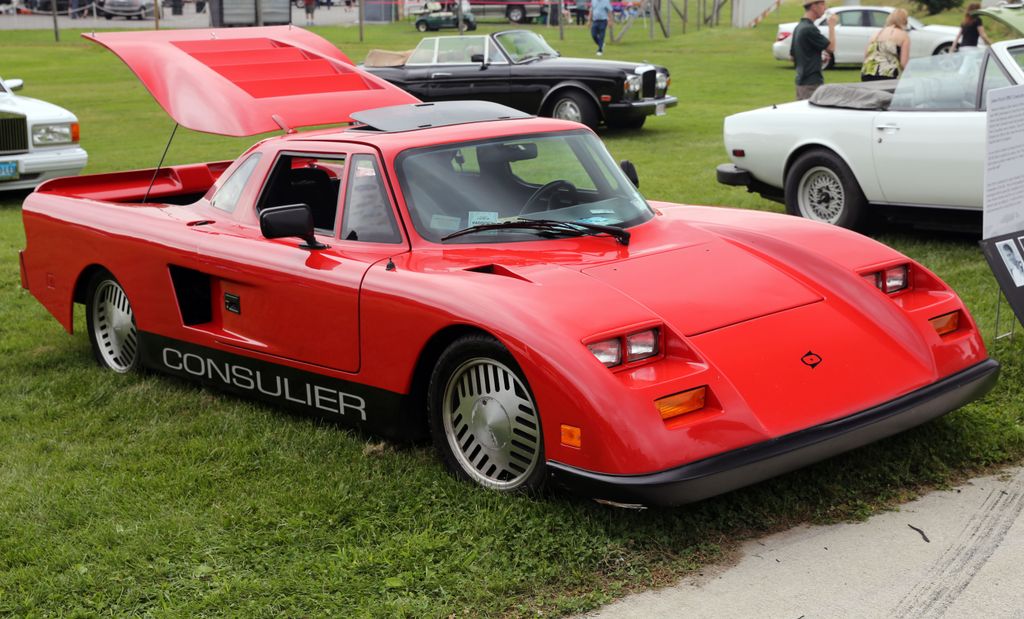
1. **The IMSA Consulier GTP**Warren Mosler’s Consulier GTP stands as a remarkable testament to engineering prowess, a race car whose meteoric rise and subsequent fall left a lasting impression on motorsport. Despite its relatively brief career, its achievements on the track were nothing short of extraordinary, powered by an unlikely hero: a Dodge turbocharged 2.2 K-Car engine. This compact yet potent powerplant enabled the Consulier GTP to fiercely contend with, and often outperform, more established and supposedly superior racing machines, making its mark against factory-built Porsches and formidable twin-turbo Callaway Corvettes.
The Consulier’s consistent dominance, however, created an unforeseen dilemma for the racing leagues. The International Motor Sports Association (IMSA) began to fear that the growing superiority of this underdog would detrimentally impact viewership and crucial sponsorships. While initially exciting, the sight of an upstart beating traditional powerhouses eventually started to hurt the league’s standing. In an attempt to curb its advantage, IMSA first imposed a substantial 300-pound weight penalty on the Consulier GTP. Yet, even with this handicap, the car continued to perform at an impressive level, demonstrating its inherent superiority.
Ultimately, IMSA concluded that the car’s consistent success posed too great a threat to the competitive balance of the series, leading to its complete ban from racing in 1991. This abrupt decision brought an end to its brief but impactful career. Today, the IMSA Consulier GTP is often revered as one of America’s forgotten supercars, its legacy living on as a symbol of innovation, speed, and the intense competition that once defined the world of motorsport. Its story remains an unforgettable chapter in racing history, highlighting how technological prowess can force drastic rule changes.
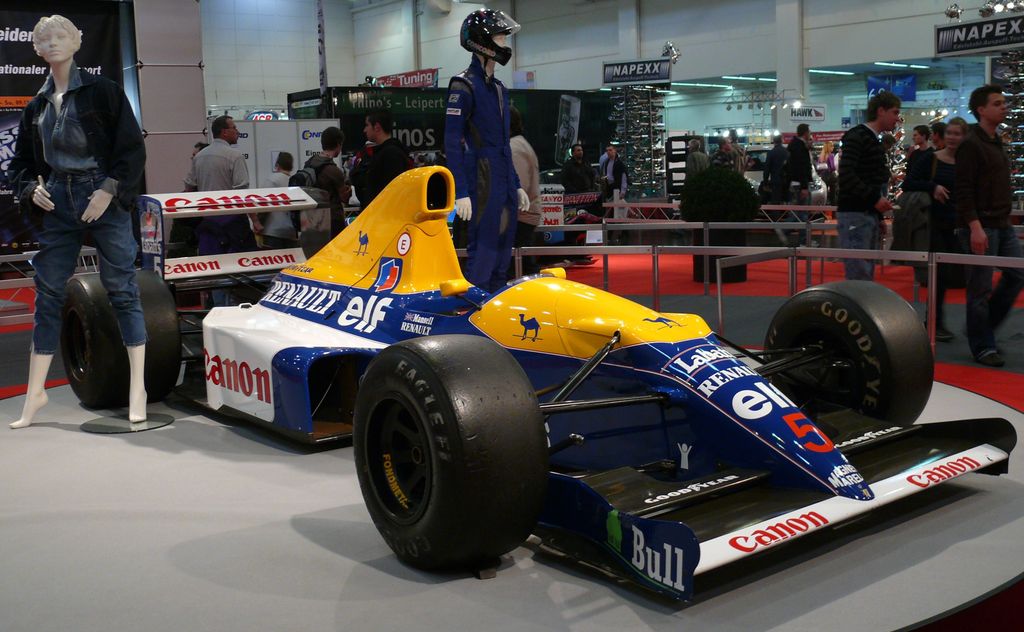
2. **The 1992 Williams FW14B**In the high-stakes arena of Formula One, the 1992 Williams FW14B became an almost mythical machine, dominating the season thanks to its groundbreaking active suspension system. This truly innovative technology provided an unparalleled level of precision, allowing the car to outperform every other competitor on the track with an ease that bordered on unbelievable. The system was meticulously programmed to anticipate and adjust to surface changes, offering a dynamic adaptability unprecedented in racing at that time.
The FW14B’s sophisticated hydraulic system further enhanced its formidable capabilities, uniquely fine-tuning the suspension based on the individual load exerted on each tire. This meticulous control allowed the car to adapt seamlessly to varying track conditions, bestowing upon it an undeniable advantage in every race. It could, for instance, lower its suspension to maximize grip during aggressive cornering or subtly raise it to minimize drag on flat-out straights, translating directly into superior handling dynamics and raw speed that rivals simply couldn’t match.
The car’s phenomenal performance and revolutionary technology quickly became the central topic in Formula One. Rival teams, struggling to keep pace, lodged numerous complaints, arguing the active suspension system was unfair and prohibitively expensive to develop. By 1993, these widespread concerns culminated in the official banning of active suspension technology from Formula One. The sport’s governing body concluded such advancements were too costly and created an inequitable playing field. Despite this, the car’s legacy as one of the most advanced and successful machines in F1 history remains, marking a significant turning point in technology.
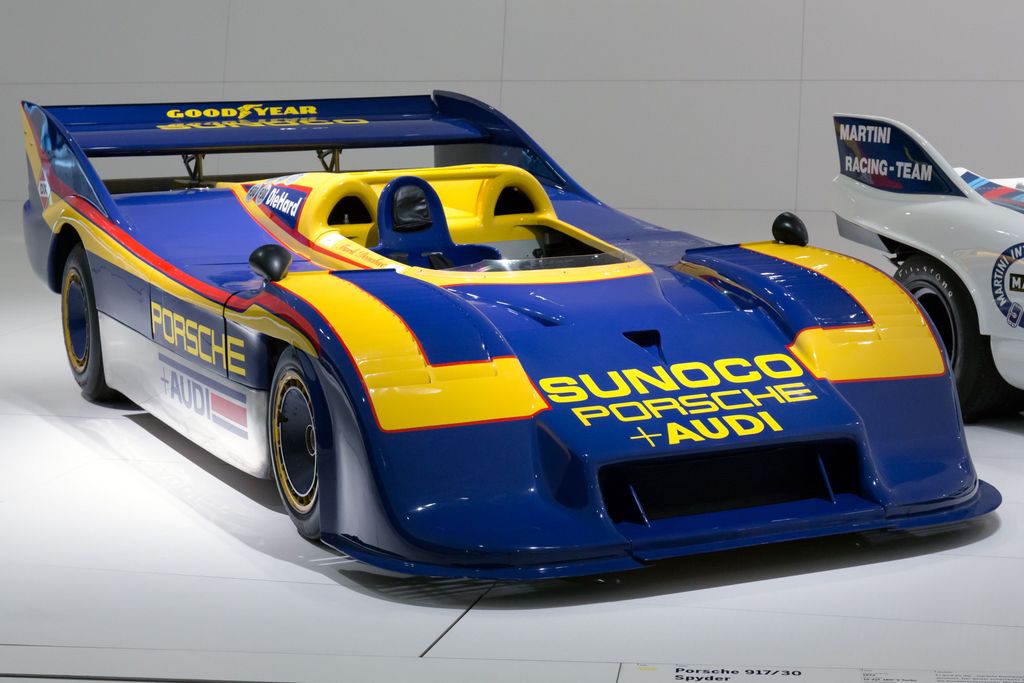
3. **The 1973 Porsche 917/30**The Porsche 917/30, famously piloted by “Captain Nice” Mark Donohue, is often celebrated as one of the most extraordinarily powerful and innovatively engineered race cars of its era. Conceived for the demanding Can-Am series, this automotive leviathan married a turbocharged flat-12 engine, derived from Porsche’s Le Mans-winning technology, with a chassis optimized for sheer dominance. The result was a staggering output of 1300 horsepower, a figure that not only dwarfed its contemporaries but remains extraordinary even by today’s standards.
With such immense, unbridled power, the Porsche 917/30 rapidly asserted itself as an unstoppable force within Can-Am racing. It effortlessly outpaced its competitors, most notably embarrassing the previously dominant McLaren team, which had enjoyed a virtually unchallenged reign. The car’s raw, unadulterated power made it almost unbeatable, leaving all other contenders struggling in its wake. Its performance was a clear statement of overwhelming superiority that left no room for doubt.
The 917/30’s absolute dominance did not go unnoticed, leading directly to a monumental shift in the sport’s regulations. Can-Am organizers, concerned the series was becoming a singular Porsche procession, introduced new restrictions for the 1974 season: a stringent fuel limit targeting turbocharged engines. This rule was unequivocally aimed at neutralizing the 917/30’s formidable advantage and re-leveling the playing field. Consequently, both the Penske and Porsche teams were compelled to withdraw, ending the 917/30’s reign. Its story cements its status as a symbol of how extreme speed and advanced technology can irrevocably alter motorsport history.
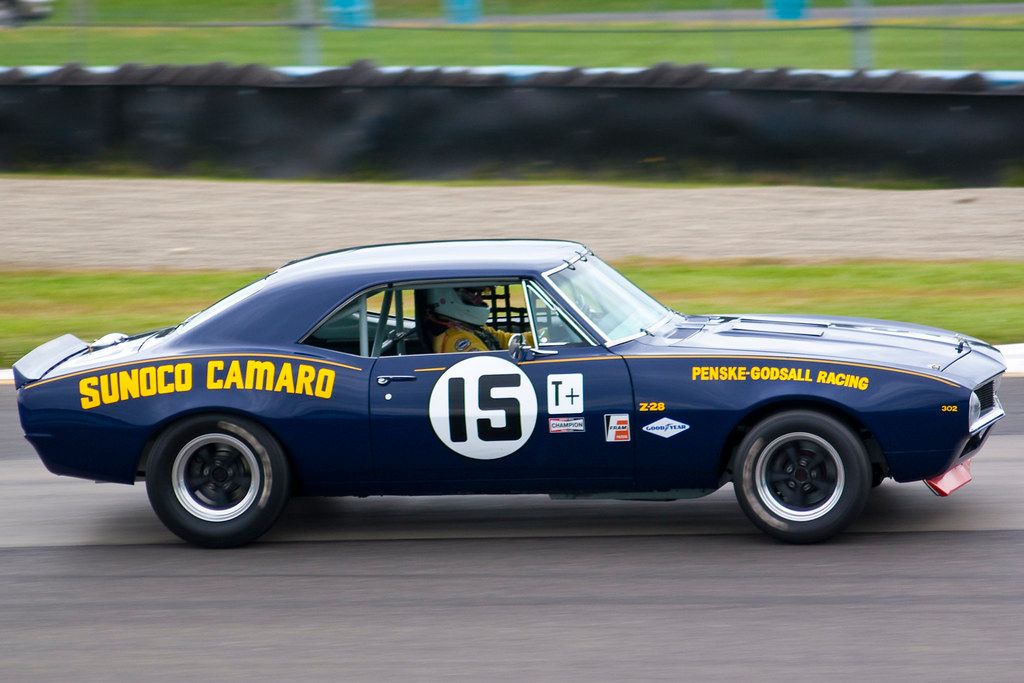
4. **The 1967 Penske Chevrolet Camaro Z/28**Mark Neary Donohue Jr., known as “Captain Nice,” earned a formidable reputation in American racing, not just for his driving skill, but for his exceptional ability to meticulously dissect the rulebook and exploit its inherent loopholes. This talent frequently allowed him to gain significant, often controversial, advantages over his rivals. One of the most glaring examples of this audacious approach was his iconic 1967 Penske Chevrolet Camaro Z/28, a machine that would become legendary for its notoriety and rule-bending modifications.
The Z/28 became infamous due to several unconventional modifications that granted it an undeniable, and many would argue, unfair edge. Some of the car’s body panels had been subtly treated with acid to reduce weight, making it considerably faster and more agile on the track. Additionally, a custom-engineered safety cage, while ostensibly for protection, also significantly increased the vehicle’s structural rigidity, further enhancing its performance and handling dynamics in ways not explicitly allowed by the spirit of the rules.
Captain Nice’s modified Camaro Z/28 stirred considerable controversy. Its extreme modifications led to widespread accusations of cheating, solidifying the Z/28’s place as one of the most notorious race cars in motorsport history. In response, Trans-Am organizers officially banned all “lightweight” vehicles. However, the resourceful Captain Nice was not easily deterred, famously re-entering the car the following year, cleverly disguised as a 1968 model. This act only cemented the Z/28’s legendary, albeit infamous, reputation as one of the most unconventional and debated race cars of its time.
Car Model Information: 2024 RAM 1500 Laramie
Name: Chevrolet Camaro (fourth generation)
Caption: 1993 Chevrolet Camaro Z28
Manufacturer: Chevrolet
Production: November 1992 – August 27, 2002
ModelYears: 1993–2002
Assembly: Sainte-Thérèse, Quebec
Class: Pony car,Muscle car
BodyStyle: ubl
Platform: GM F platform
Related: ubl
Layout: Front-engine, rear-wheel drive layout
Engine: ubl
Transmission: ubl
Wheelbase: cvt
Length: ubl
Width: cvt
Height: ubl
Weight: cvt
Predecessor: Chevrolet Camaro (third generation)
Successor: Chevrolet Camaro (fifth generation)
Designer: ubl
Categories: 2000s cars, All articles needing additional references, All articles with dead external links, All articles with failed verification, Articles needing additional references from July 2020
Summary: The fourth-generation Chevrolet Camaro, colloquially known as the “Catfish Camaro”, is a pony car that was produced by American automobile manufacturer General Motors for the 1993 through 2002 model years. It was introduced on an updated F-body platform but retained the same characteristic since the first-generation’s introduction back in 1967: two doors, coupe or convertible bodystyles, rear-wheel drive, and a choice of 6-cylinder and V8 engines. The Camaro was revised in 1998 with both exterior and engine changes. General Motors discontinued production of the fourth generation of the Camaro due to slow sales, a deteriorated sports coupé market, and plant overcapacity.
Get more information about: Chevrolet Camaro (fourth generation)
Buying a high-performing used car >>>
Brand: Chevrolet Model: Camaro Z/28
Price: $37,798 Mileage: 34,409 mi.
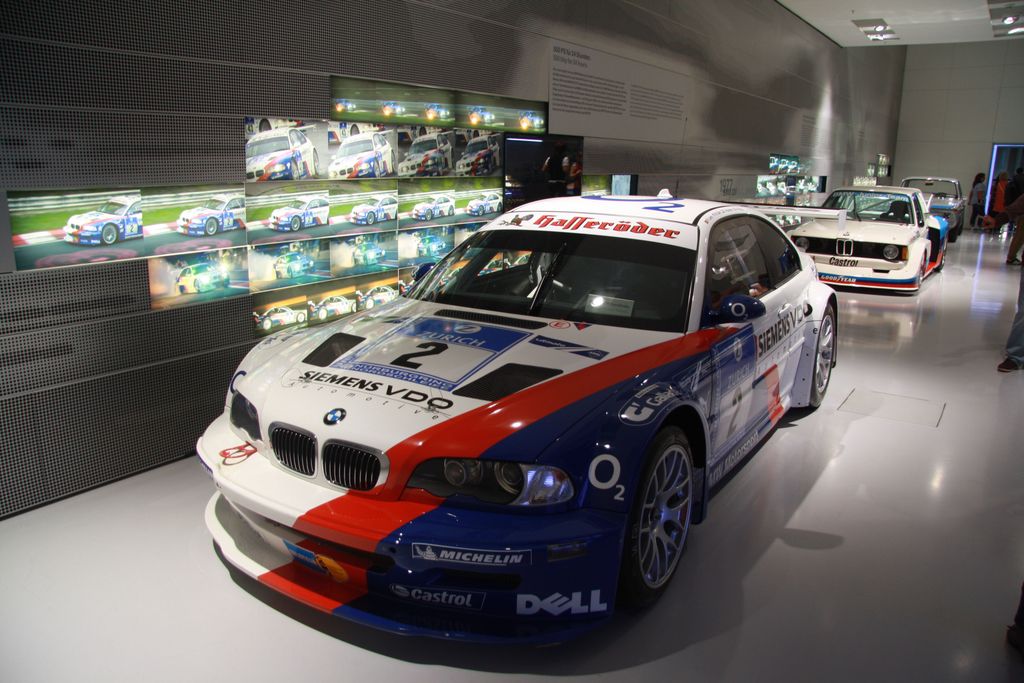
5. **The 2001 BMW M3 GTR**The 2001 BMW M3 GTR, born from the acclaimed E46-generation M3, represented a pinnacle of automotive engineering, celebrated for its exquisite straight-six engine and the precision inherent in its design. BMW proudly marketed this vehicle as the “Ultimate Driving Machine,” a slogan now synonymous with the brand. The M3 GTR was a true masterpiece, boasting exceptional performance and unparalleled precision on both road and track, setting new benchmarks for its class.
Despite its engineering brilliance, the M3 GTR faced an unexpected hurdle: it didn’t meet the stringent homologation requirements for the American Le Mans Series (ALMS). To overcome this, BMW undertook a bold maneuver: they dropped a formidable 500-horsepower V8 engine into a limited number of production cars. This strategic modification allowed them to satisfy the necessary homologation standards, enabling them to unleash a racing machine demonstrably superior to its competition on the track.
Once the M3 GTR debuted, its dominance was immediate and undeniable, swiftly outpacing every competitor. However, in 2002, ALMS introduced revised rules requiring 100 road cars for qualification. This placed BMW in an extreme dilemma; the M3 GTR, in its specialized racing guise, was too powerful and focused for mass production. Consequently, BMW had no viable option but to pull the plug on the project. The M3 GTR’s brief yet spectacular reign ended, cementing its status as one of motorsport’s most iconic short-lived race cars, a powerful reminder of how quickly rule changes can impact formidable machines.
Car Model Information: 2024 RAM 1500 Laramie
Name: BMW M3
Caption: 2021 BMW M3 Competition (G80)
Manufacturer: BMW M
Production: unbulleted list
Class: Compact executive car
Layout: unbulleted list
Related: unbulleted list
Categories: 1990s cars, 2000s cars, 2010s cars, 2020s cars, All articles with unsourced statements
Summary: The BMW M3 is a high-performance version of the BMW 3 Series, developed by BMW’s in-house motorsport division, BMW M GmbH. M3 models have been produced for every generation of 3 Series since the E30 M3 was introduced in 1986.
The initial model was available in a coupé body style, with a convertible body style made available soon after. M3 saloons were offered initially during the E36 (1994–1999) and E90 (2008–2012) generations. Since 2014, the coupé and convertible models have been rebranded as the 4 Series range, making the high-performance variant the M4. Variants of the 3 Series since then have seen the M3 produced as a saloon, until 2020, when the M3 was produced as an estate (Touring) for the first time, alongside the saloon variant.
Get more information about: BMW M3
Buying a high-performing used car >>>
Brand: BMW Model: M3 GTR
Price: $37,798 Mileage: 34,409 mi.
Read more about: Future Fortunes on Four Wheels: 14 Classic Cars You Need to Buy Now Before Their Value Explodes
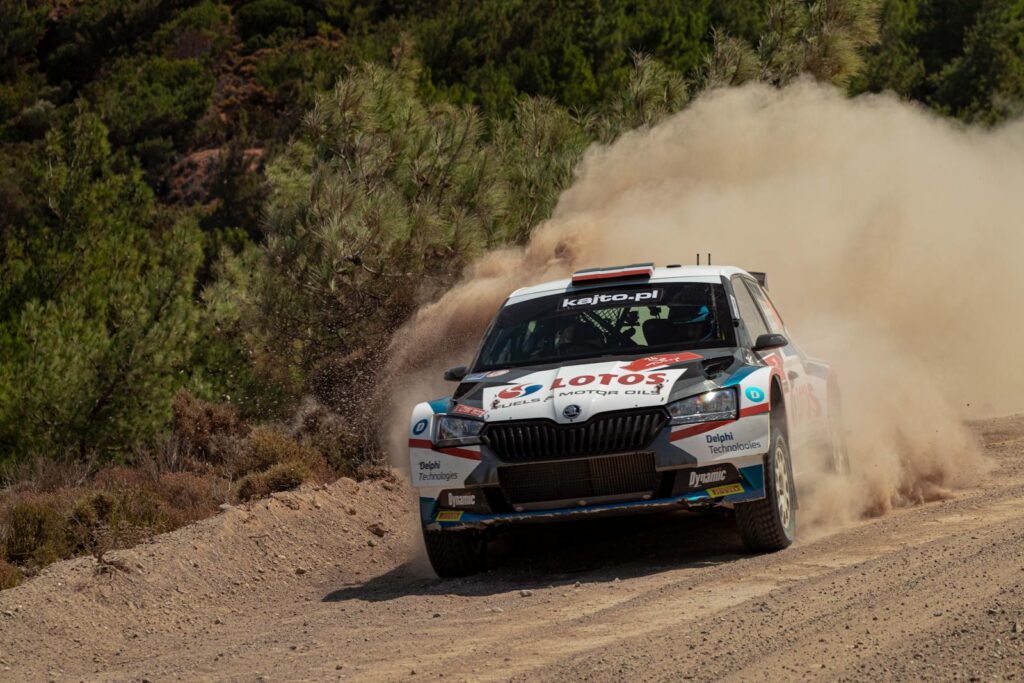
6. **1968 Lotus 56 A Revolutionary Car Banned After One Race**The 1968 Lotus 56 carved out a unique place in motorsport history with its revolutionary design, making an indelible mark at the prestigious Indianapolis Motor Speedway. Piloted by British racing legend Graham Hill, this pioneering vehicle was distinguished by its potent Pratt & Whitney turbine engine and a highly advanced four-wheel-drive system. These cutting-edge technologies collectively positioned the car as a bold symbol of futuristic racing, a machine seemingly plucked from a science fiction novel.
Despite its avant-garde engineering and undeniable potential, the Lotus 56 never achieved victory in the coveted Indy 500. The car demonstrated immense speed, leading a significant portion of the race, but its challenge was ultimately cut short by an unfortunate mechanical failure – a failed fuel pump just laps shy of the finish line. Nevertheless, even without securing the win, the Lotus 56’s sheer performance and innovative approach were sufficient to capture widespread attention and leave a profound, lasting impact on the motorsport community.
The car’s solitary appearance at the Indy 500 effectively heralded the end of an era for both turbine-powered race cars and four-wheel-drive systems within the event. Due to its competitive speed and the attention it garnered, organizers deemed it too advanced for the time. Following its one and only showing, the Indianapolis 500 governing body promptly banned both turbine engines and four-wheel-drive systems from all future races. Thus, the Lotus 56 remains an iconic example of how radical innovation can rapidly trigger significant rule changes, illustrating that sometimes, technology can indeed outpace the very sport it intends to conquer.
Now, as we continue our journey through the annals of racing history, we turn our attention to machines that redefined what was possible through radical aerodynamic ingenuity, advanced downforce generation, and sheer cleverness. These are the “Aerodynamic Wonders and Suction Supremacy Machines,” vehicles that pushed the envelope in how they interacted with the air, or even manipulated it, to gain an undeniable advantage on the track. Their stories are a testament to the relentless pursuit of speed and grip, often culminating in rule changes designed to rein in their overwhelming superiority.
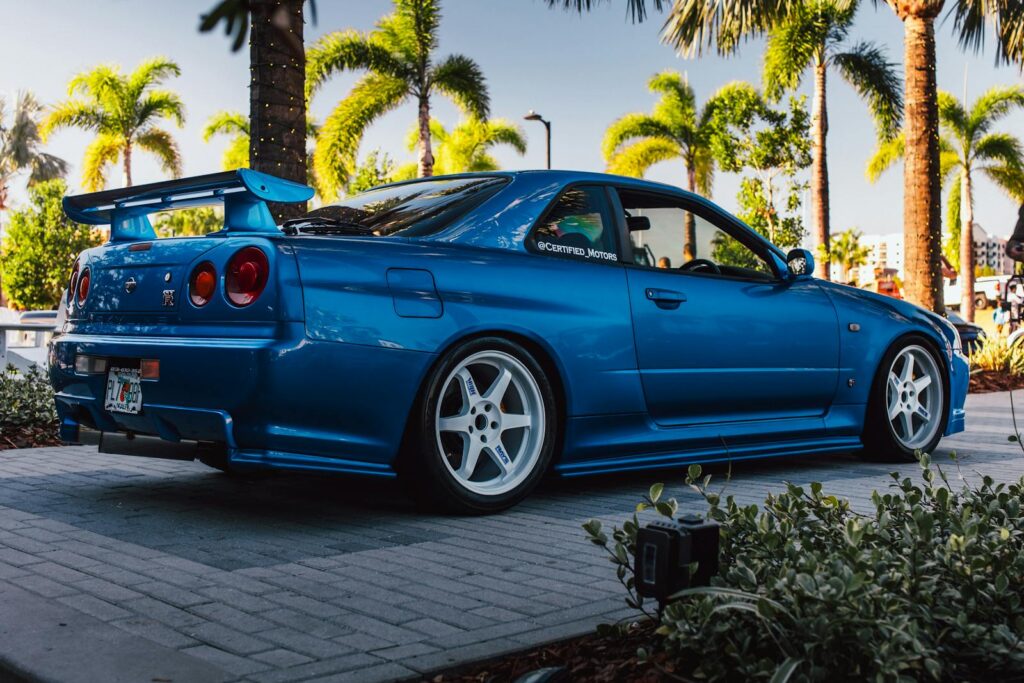
7. **1992 Nissan Skyline GT-R Group A A Legend Banned for Dominance**The Nissan Skyline GT-R has, for decades, captivated enthusiasts, and the 1992 Group A model perfectly embodies its legendary status. This technical marvel fused a formidable turbocharged straight-six engine with a truly ingenious all-wheel-drive system, creating a blueprint for dominance that would decisively shape touring car racing. Its reign in Australian touring circuits was nothing short of legendary; the R32 Skyline GT-R didn’t just win, it utterly crushed the competition, establishing an undefeated streak that thrilled fans and set an undeniable new benchmark for performance.
However, such overwhelming superiority inevitably drew the ire of the governing body of the Australian racing organization. The Skyline’s consistent victories, while exciting, began to unravel the competitive balance of the series. Deeming its performance simply too much for the competition, officials swiftly imposed strict regulations, effectively banning both turbocharging and the car’s groundbreaking all-wheel-drive system. This abrupt decision brought an end to the Skyline GT-R’s epic run, closing a significant chapter on one of motorsport’s most dominant, and ultimately prohibited, eras down under.
Car Model Information: 2024 RAM 1500 Laramie
Name: Nissan Skyline GT-R
Caption: 2002 Nissan Skyline GT-R V·spec II (BNR34)
Manufacturer: Nissan
Production: unbulleted list
Assembly: unbulleted list
Class: Sports car
Related: unbulleted list
Transmission: unbulleted list
Predecessor: Nissan Skyline#BLRA-3 Skyline Sport
Successor: Nissan GT-R
Categories: 1970s cars, 1980s cars, 1990s cars, 2000s cars, 24 Hours of Le Mans race cars
Summary: The Nissan Skyline GT-R (Japanese: 日産・スカイラインGT-R, Hepburn: Nissan Sukairain GT-R) is a Japanese sports car based on the Nissan Skyline range. The first cars named “Skyline GT-R” were produced between 1969 and 1972 under the model code KPGC10, and were successful in Japanese touring car racing events. This model was followed by a brief production run of second-generation cars, under model code KPGC110, in 1973.
After a 16-year hiatus, the GT-R name was revived in 1989 as the BNR32 (“R32”) Skyline GT-R. Group A specification versions of the R32 GT-R were used to win the Japanese Touring Car Championship for four years in a row. The R32 GT-R also had success in the Australian Touring Car Championship, with Jim Richards using it to win the championship in 1991 and Mark Skaife doing the same in 1992, until a regulation change excluded the GT-R in 1993. The technology and performance of the R32 GT-R prompted the Australian motoring publication Wheels to nickname the GT-R “Godzilla” in its July 1989 edition. Wheels then carried the name through all the generations of Skyline GT-Rs, most notably the R34 GT-R, which they nicknamed “Godzilla Returns”, and described as “The best handling car we have ever driven”. In tests conducted by automotive publications, R34 GT-R have covered a quarter of a mile (402 metres) in 12.2 seconds from a standing start time and accelerated from 0–100 km/h (0–62 mph) in 4.4 seconds.
The Skyline GT-R became the flagship of Nissan performance, showing many advanced technologies including the ATTESA E-TS all-wheel drive system and the Super-HICAS four-wheel steering. Today, the car is popular for import drag racing, circuit track, time attack and events hosted by tuning magazines. Production of the Skyline GT-R ended in August 2002. The car was replaced by the GT-R (R35), an all-new vehicle based on an enhanced version of the Skyline V36 platform. Although visibly different, the two vehicles share similar design features and are manufactured in the same factory.
The Skyline GT-R was never manufactured outside Japan, and the sole export markets were Hong Kong, Singapore, Australia and New Zealand, in 1991, and the UK (in 1997, due to the Single Vehicle Approval scheme). They are also popular across the world as used Japanese imports.
Despite this, the Skyline GT-R has become an iconic sports car as a grey import vehicle in the Western world (mainly the United Kingdom, Australia, New Zealand, South Africa, Ireland, Canada, and the United States). It has become notable through pop culture such as The Fast and the Furious, Initial D, Shakotan Boogie, Tokyo Xtreme Racer, Wangan Midnight, Need for Speed, Forza, Driving Emotion Type-S, Test Drive, and Gran Turismo.
In 2019, Nismo announced that it would resume production of spare parts for all generations of the Skyline GT-R, including body panels and engines.
Get more information about: Nissan Skyline GT-R
Buying a high-performing used car >>>
Brand: Nissan Model: Skyline GT-R
Price: $37,798 Mileage: 34,409 mi.

8. **1969 Dodge Charger Daytona & 1970 Plymouth Superbird Banned for Innovation**In the late 1960s and early 1970s, Mopar’s Aero cars, the Dodge Charger Daytona and Plymouth Superbird, roared onto the American racing scene as two of NASCAR’s most iconic and recognizable machines. These vehicles were the zenith of aerodynamic design for their era, meticulously crafted with the audacious goal of conquering tracks. The Charger Daytona, in particular, was a radical departure, featuring a gargantuan rear wing and an elongated nosepiece so advanced that it made the Charger Daytona the first car to shatter the 200 mph barrier in a NASCAR race, cementing its status as an unparalleled innovator.
The undeniable performance and record-breaking speed of the Charger Daytona and its sibling, the 1970 Plymouth Superbird, inevitably put them at odds with NASCAR officials. Their groundbreaking designs made them simply too fast for the competition, threatening to turn every race into a predictable Mopar procession. In response, NASCAR imposed a stringent power limit on all cars equipped with wings for the 1971 season, effectively banning these aerodynamic marvels from further competition. This decision ended an exhilarating era, but the Charger Daytona and Superbird remain etched in history as symbols of audacious innovation and unbridled, rule-bending speed.
Car Model Information: 2024 RAM 1500 Laramie
Name: Dodge Charger Daytona
Caption: 1969 Dodge Charger Daytona
Manufacturer: Dodge
Production: 1969–1970,2006–2009,2013,2017–2023
Class: Muscle car
Layout: FR layout
Categories: 1960s cars, 1970s cars, 2000s cars, All articles needing additional references, All articles with unsourced statements
Summary: Dodge produced three separate models with the name Dodge Charger Daytona, all of which were modified Dodge Chargers. The name was taken from Daytona Beach, Florida, which was an early center for auto racing and still hosts the Daytona 500, NASCAR’s premier event. The original Dodge Charger Daytona was designed to beat the competition in NASCAR racing. It was the first NASCAR vehicle to reach 200 miles per hour, which was a major milestone at the time.
The first use of the ‘Daytona’ name for a car was on a version of the Studebaker Lark. The Daytona was the performance model of the compact Lark, and it was produced during the 1960s.
Get more information about: Dodge Charger Daytona
Buying a high-performing used car >>>
Brand: Dodge Model: Charger Daytona
Price: $37,798 Mileage: 34,409 mi.
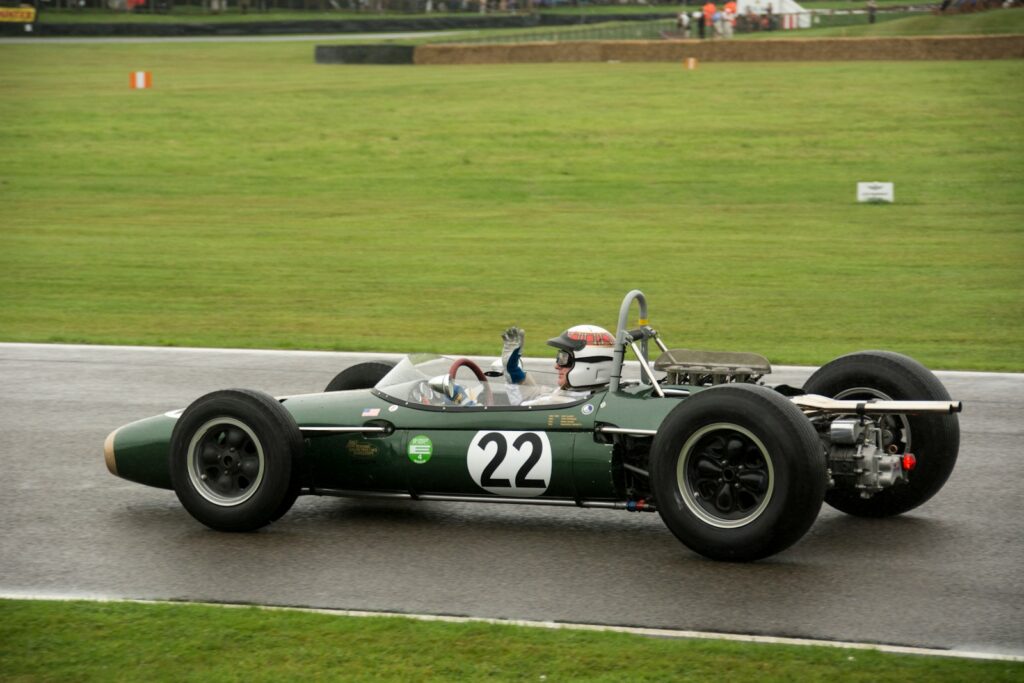
9. **1978 Brabham BT46B The “Vacuum Car” That Was Banned**The 1978 Brabham BT46B stands as a testament to Gordon Murray’s legendary design genius, implementing a truly revolutionary concept directly inspired by the Chaparral 2J. This groundbreaking Formula One machine featured a unique system built around a massive fan, ingeniously powered directly off the car’s gearbox, which generated an extraordinary amount of additional downforce. This “vacuum effect” allowed the car to adhere to the track with unprecedented grip, especially through corners, where it could maintain speeds that its rivals simply couldn’t match, giving it an almost unfair advantage.
In its very first outing, the BT46B dramatically demonstrated the power of its radical design, with Niki Lauda storming to victory at the Swedish Grand Prix. However, such a dominant debut immediately ignited a firestorm of protest from rival teams, who argued the fan system was fundamentally unfair and presented an insurmountable advantage. This controversy quickly led to a dramatic response from the governing body: after just one season, the BT46B and its fan system were swiftly banned from racing, ending the brief but unforgettable reign of this audacious “vacuum car” in Formula One.
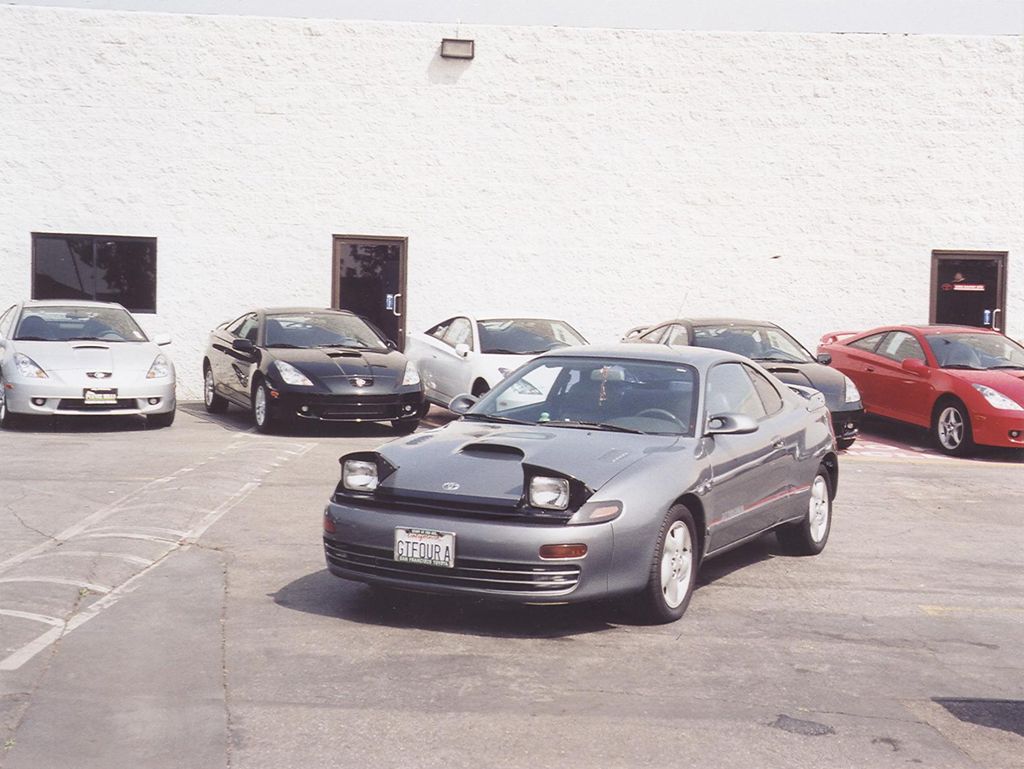
10. **1988 WRC Toyota Celica GT-Four A Clever Trick That Led to a Ban**Toyota’s entry into the World Rally Championship (WRC) in 1988 with the Celica GT-Four marked the beginning of a formidable era for the brand in rally sport, quickly securing its first victory in 1989. However, as rally cars became faster, safety concerns grew, prompting the Fédération Internationale de l’Automobile (FIA) to impose new regulations. A key rule introduced in 1995 mandated restrictor plates in turbocharged cars to limit engine power, aimed at reducing vehicle speeds on public roads.
Yet, Toyota’s engineers, ever resourceful, devised an incredibly clever, albeit illicit, system to bypass this rule. They developed a mechanism that allowed the restrictor plate to physically move out of the way as the car accelerated. This meant that while the Celica GT-Four appeared compliant during static inspections, it was covertly generating significantly more power than allowed during actual races. This ingenious deception granted Toyota a substantial and unfair advantage over its unsuspecting competitors, eventually leading to a ban for this clever circumvention of regulations.
Car Model Information: 2024 RAM 1500 Laramie
Name: Toyota Celica GT-Four
Caption: Toyota Celica GT-Four All-Trac Turbo (ST185, US)
Manufacturer: Toyota
Aka: ubl
Production: October 1986 – June 1999
ModelYears: 1986 – 1999
Assembly: Tahara, Aichi
Class: ubl
BodyStyle: liftback,coupé
Layout: Front-engine, four-wheel-drive layout
Related: Toyota Celica
Categories: 1980s cars, 1990s cars, All-wheel-drive vehicles, Articles with hAudio microformats, Articles with short description
Summary: The Toyota Celica GT-Four is a high performance model of the Celica Liftback that was produced from 1986 to 1999, with a turbocharged 3S-GTE engine, and full-time AWD. It was created to compete in the World Rally Championship, whose regulations dictate that a manufacturer must build road-going versions of the vehicle in sufficient numbers. These vehicles are referred to as “homologation special vehicles”.
The Celica GT-Four came in three generations; the ST165, based on the fourth generation Celica, and manufactured between October 1986 and August 1989; the “super round” shape ST185 produced from September 1989 to September 1993; and the ST205, built from February 1994 to June 1999.
The Celica GT-Four production cars were built at Toyota’s Tahara plant in Aichi Prefecture, Japan, and the rally cars were prepared by Toyota Team Europe in Cologne, Germany.
The Celica GT-Four ST165 made its World Rally Championship (WRC) debut in the 1988 Tour de Corse, with its first WRC victory coming in the 1989 Rally Australia. The ST185’s WRC debut was in the 1992 Rally Monte Carlo, and its first WRC win was in the 1992 Safari Rally, which was one of its four victories in that year. The ST185 was Toyota’s most successful rally car for more than two decades until this position was taken by Toyota Yaris WRC, and now the GR Yaris Rally1. The Celica ST185 won the WRC Drivers’ Championship in 1992, and the WRC Manufacturers’ and Drivers’ championships in 1993 and 1994. The ST205 came in late 1994, and became the official rally car in 1995 with one WRC victory before disqualification. It also won the 1996 European Rally Championship.
The significance of the Toyota Celica GT-Four in WRC history, previously dominated by European manufacturers, is that it was the first time a Japanese car manufacturer entered the WRC with an AWD turbocharged car, took trophies and won the titles. Since then other Japanese manufacturers have been successful in the WRC. Toyota preceded the Mitsubishi (Lancer Evolution and Galant VR-4) and the Subaru (Legacy and Impreza), but not the Mazda (Mazda 323GT-R & 323GT-X). Toyota later exited the WRC to concentrate their racing efforts in Formula One, but in 2017, 11 years after the Celica was discontinued, Toyota returned to WRC with the Toyota Yaris.
Toyota Team Europe (TTE) was also the first to introduce the anti-lag system (ALS) in their Group A ST205 Celica GT-Four rally cars, a technological breakthrough that was later adopted by other teams.
Get more information about: Toyota Celica GT-Four
Buying a high-performing used car >>>
Brand: Toyota Model: Celica GT-Four
Price: $37,798 Mileage: 34,409 mi.
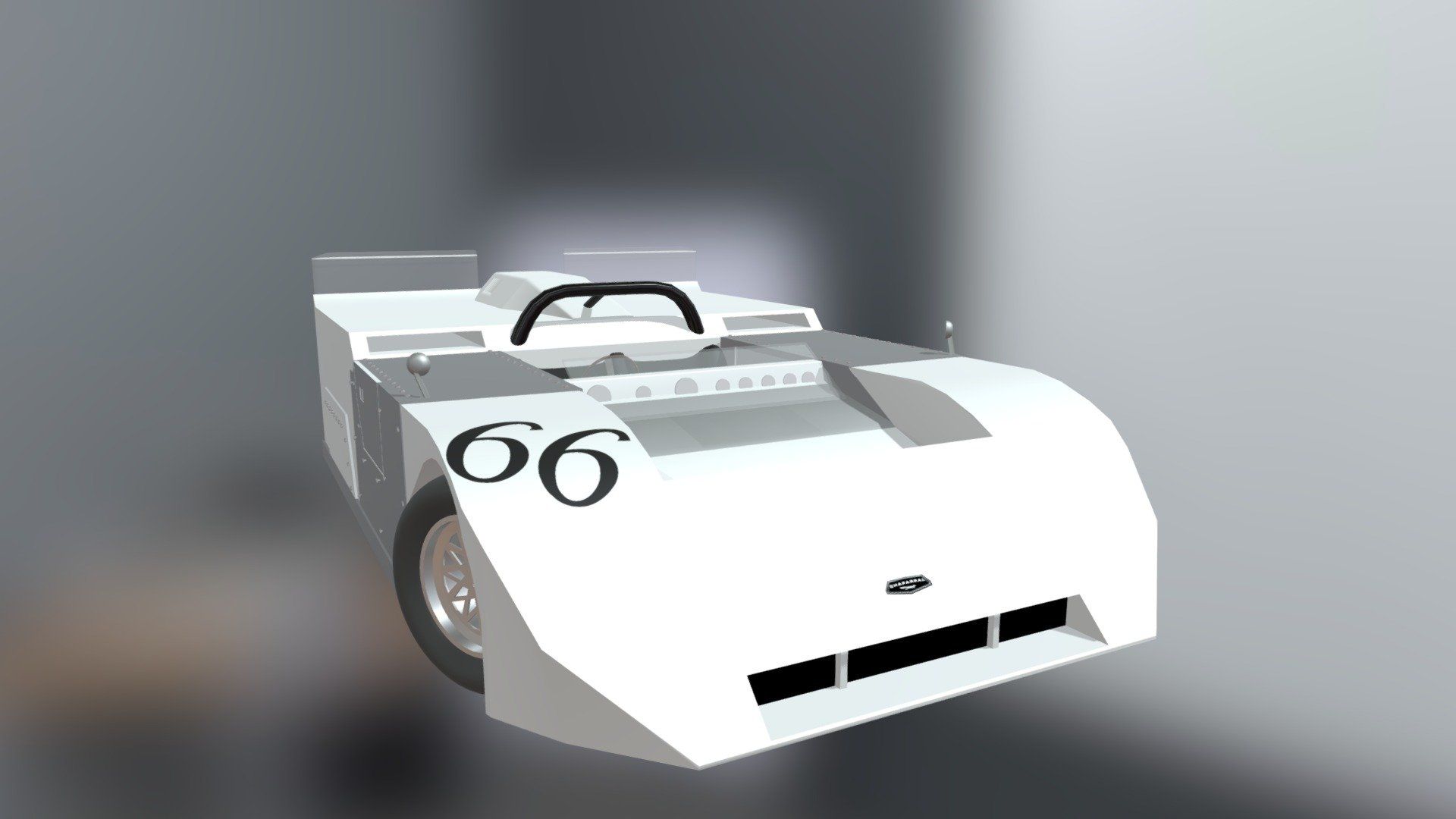
11. **1970 Chaparral 2J A Groundbreaking Car That Got Banned**The 1970 Chaparral 2J stands as a monument to pure, unadulterated automotive innovation, a creation of the legendary Jim Hall. Renowned for his unconventional approach, Hall’s most audacious concept featured two powerful fans, astonishingly driven by a separate snow blower engine, dedicated solely to generating an enormous amount of downforce. This radical system effectively sucked the car down to the ground, providing the 2J with an incredible and unprecedented level of grip and stability, promising unparalleled handling dynamics even at “low” speeds.
Despite its groundbreaking technology, the Chaparral 2J famously never secured a race victory, plagued by mechanical problems that prevented it from reaching its full potential. Nevertheless, the sheer ingenuity and competitive advantage of its fan system did not escape the notice of racing officials. Deeming the immense, artificial downforce unfair, the governing body intervened. Before the 2J could truly iron out its reliability issues, the fan system was banned, prematurely ending its promising, albeit troubled, career and solidifying its place as one of motorsport’s most iconic and controversial “what-if” machines.

12. **1997 Chevrolet “T-Rex” Monte Carlo A Radical Car That Was Banned**The 1997 Chevrolet “T-Rex” Monte Carlo, a product of Hendrix Motorsports, became infamous for being banned after a single, dominant race. Driven by Jeff Gordon and designed by Rex Stump, a former Corvette engineer, this distinctive car wasn’t just visually striking with its Jurassic Park-themed paint scheme; it was meticulously engineered to push the boundaries *within* every NASCAR rule. Gordon masterfully dominated the 1997 All-Star race, unequivocally showcasing its impressive, rule-abiding performance on the track.
However, its triumph was short-lived. Following the race, NASCAR officials conducted a thorough post-race inspection. Despite confirming that the “T-Rex” technically met all official rules, they raised profound concerns, deeming it simply too “radical” and unconventional. The officials felt its design offered Gordon and Hendrix Motorsports an unfair advantage, one that went against the spirit of competition. This puzzling decision, banning a car that had performed within the regulations, abruptly ended its racing career, yet forever cemented the “T-Rex” Monte Carlo as one of the most iconic and debated race cars in NASCAR history.
Car Model Information: 2024 RAM 1500 Laramie
Name: Chevrolet Monte Carlo
Manufacturer: Chevrolet
Production: 1969–1987,1994–2007
ModelYears: 1970–1988,1995–2007
Class: Personal luxury car
BodyStyle: coupé
Layout: FR layout
Caption: 2006 Chevrolet Monte Carlo LS
Categories: 1980s cars, 1990s cars, 2000s cars, All Wikipedia articles written in American English, All articles needing additional references
Summary: The Chevrolet Monte Carlo is a two-door coupe that was manufactured and marketed by the Chevrolet division of General Motors. Deriving its name from the city in Monaco, the Monte Carlo was marketed as the first personal luxury car of the Chevrolet brand. Introduced for the 1970 model year, the model line was produced across six generations through the 2007 model year, with a hiatus from 1989 until 1994. The Monte Carlo was a variant of the Pontiac Grand Prix throughout its production.
From 1970 until 1972, the Monte Carlo rode on the unique “A-Special” platform with the Grand Prix, shifting to the standard A-body intermediate chassis from the 1973 through 1977 model years. For 1978, the Monte Carlo line underwent downsizing, but was still considered a midsized coupe. The rear-wheel drive A-body platform of this generation of Monte Carlo was redesignated as the G-body when GM’s front-wheel drive A-body cars were introduced for the 1982 model year. After an abbreviated 1988 model year, the Monte Carlo was replaced by the two-door Chevrolet Lumina.
For the 1995 model year, the Monte Carlo was revived, replacing the two-door Lumina. It shared the front-wheel drive W-platform with the two-door Grand Prix, and was the largest coupe in the Chevrolet lineup. After the 2002 model year, the Grand Prix coupe was discontinued, the Monte Carlo became the largest two-door model produced by an American auto manufacturer.
In response to declining sales of the model line, Chevrolet discontinued the Monte Carlo after the 2007 model year. During much of its production, the Monte Carlo represented the Chevrolet brand in stock car racing. During the 1980s, the Monte Carlo SS was introduced, featuring aerodynamically enhanced styling; as part of its revival, the Monte Carlo again represented Chevrolet in stock car racing from 1995 through its discontinuation.
Get more information about: Chevrolet Monte Carlo
Buying a high-performing used car >>>
Brand: Chevrolet Model: Monte Carlo
Price: $37,798 Mileage: 34,409 mi.
As we reflect on these incredible machines, from the groundbreaking Skyline GT-R to the winged wonders of the Daytona and Superbird, and the ingenious fan cars like the Brabham and Chaparral, one truth becomes abundantly clear: motorsport is a perpetual dance between innovation and regulation. Engineers and drivers will always strive to find that elusive edge, to build machines that are faster, more agile, and more dominant. These banned legends, each powerful and ahead of its time, serve as powerful reminders of the audacity of human ingenuity, demonstrating that while some cars are indeed “too fast for their own good,” their legacy ultimately drives the sport forward, inspiring the next generation of automotive marvels. They may have been sidelined, but their stories continue to fuel the passion and ambition that define the thrilling world of high-performance racing.

